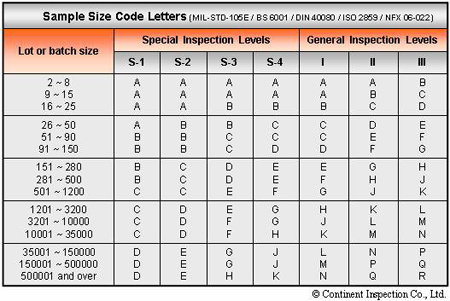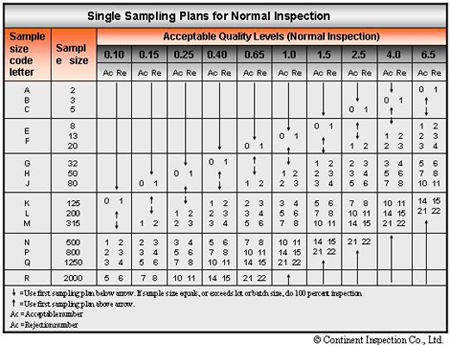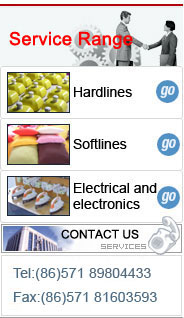Sampling Method and Quality Standards.
Method of acceptance sampling
This proven method is widely used to decide whether or not to accept or reject a production lot without checking every single items of the lot. Performed on randomly-selected sample items, once the production lot has been completed and packed, this standard is recognized by every industrial company.
Acceptance sampling is not an alternative to process improvement. Instead it should complement improvement efforts by providing incentives. It also serves as a temporary measure for ensuring quality until successful improvements are made.
Focus on Acceptable Quality Levels
CIS quality inspectors use the ISO 2859 tables (also known as AQL tables) to measure acceptable levels of quality. These tables are a US standard with equivalents in all national and international standardization organizations (ANSI/ASQC Z1.4, ISO 2859, NFX06-022, BS 6001, DIN 40080).
How do I determine the right sample size and acceptance number?
For a hypothetical inspection of a 2,000-unit lot, with an Acceptable Quality Level of II, Table B indicates that the sampling size should be 125 units. For an AQL of 2.5, the corresponding acceptance number is 7. If the number of defective units is higher than 7, the lot has to be rejected.
What should I do with defective or discarded lots?
Defective items found as part of 100% inspection can be discarded, repaired or replaced. You may also option to sell the discarded lot at a discount.
Sampling standard
CIS��s inspectors use the ISO 2859/ANSI/ASQC Z1.4/MIL-STD-105E/BS 6001/DIN 40080/NF X 06-022 tables for sampling. The tables are recognized by every industrial company. This American standard has equivalents in all national and international standardization organizations. This standard is a proven method to accept or reject a production lot by inspecting a randomly selected number of products.
TABLE A

TABLE B

Acceptance Sampling
Acceptance Sampling is used to decide whether to accept or reject a production lot. It is performed once the production lot has been completed and packed. Basic procedures for Acceptance Sampling:
- select a sample from a production lot,
- inspect the units in the sample,
- use the result to decide whether or not to accept or reject the lot.
AQL (Acceptable Quality Levels)
As a quality control company, CIS uses the Acceptable Quality Level (AQL) to establish a maximum allowable error rate or variation from the standard.
Batch/Lot
A batch or lot is a collection of products �C all identical in size, type, conditions and time of production �C from which a sample will be taken to decide whether or not it conforms to the acceptance inspection.
Sample size code letter
The sample size code letter is the link between AQL tables A and B.
Sampling Level
This reference determines the relation between the size of the lot and the size of the sample inspected. For a given lot size, increasing the Quality Level means increasing the Sample Size. This improves accuracy but also increases the time needed to complete the inspection. The Quality Level may be chosen between I, II, or III. CIS��s default Quality Level is II.
Special Inspection Level
The Special Inspection Level is used instead of the general inspection level when the production has to be operationally inspected. The special inspection level can range from S1, S2, S3 or S4.
Sampling size
The sampling size is the total number of units to be inspected.
Rejection number
The Rejection Number is equal to the acceptance number + 1 and represents the maximum allowable defective units. If the total number of sampled products presenting this type of defect is equal or superior to the rejection number, the production has failed.
|

